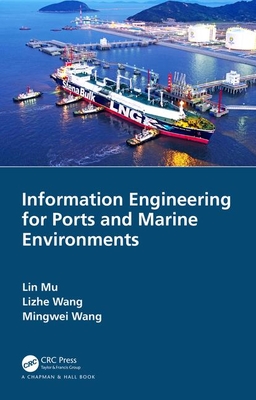Ship's Ballast Water Analysis: Microfluidic Technology in Algae Analysis
暫譯: 船舶壓載水分析:微流體技術在藻類分析中的應用
Song, Yongxin, Zhang, Junyan, Li, Mengqi
相關主題
商品描述
The International Convention for the Control and Management of Ship's Ballast Water and Sediments mandates ships undertake ballast water treatment to reduce, remove or kill organisms of concern before being allowed to discharge their water. This book introduces technologies and devices that are used for the analysis of treated ballast water. Emphasis is placed on the separation, manipulation, detection, counting, and sizing of microalgae in a microfluidic chip which shows great potential for developing miniatured analysis devices.
Features:
- Introduces technologies and devices related to analysis of treated ballast water.
- Identifies the need for reliable devices to monitor viable organisms in treated ship's ballast waters.
- Covers recent research in microfluidics-based cell sorting and developments of lab-on-chip devices.
- Addresses requirements of the Convention to be implemented by 2024.
- Reviews electric and optical-based methods for organism counting, sizing, and viability differentiation.
This book is aimed at researchers and professionals in marine engineering, ocean technology, environmental engineering, and microfluidics.
商品描述(中文翻譯)
國際船舶壓載水及沉積物控制與管理公約要求船舶在排放壓載水之前,必須進行壓載水處理,以減少、去除或消滅有關的生物。本書介紹了用於分析處理後壓載水的技術和設備。重點放在微流體晶片中微藻的分離、操作、檢測、計數和大小測量,這顯示出發展微型分析設備的巨大潛力。
特色:
- 介紹與處理後壓載水分析相關的技術和設備。
- 確認需要可靠的設備來監測處理後船舶壓載水中的可存活生物。
- 涵蓋基於微流體的細胞分選和實驗室晶片設備的最新研究。
- 解決公約要求在2024年前實施的需求。
- 回顧基於電學和光學的方法,用於生物計數、大小測量和存活性區分。
本書旨在針對海洋工程、海洋技術、環境工程和微流體學的研究人員和專業人士。
作者簡介
Yongxin Song is a professor in the College of Marine Engineering, Dalian Maritime University (DMU). He received his PhD degree in marine engineering from Dalian Maritime University in 2012. Since joining DMU, he has worked as an assistant professor (2004), associate professor (2012) and professor (2017-now).
He is a creative scientist at the forefront of exploring new sensing methods and Lab-on-chip devices and their applications in the field of marine engineering. He is committed to making breakthroughs in any topic of microfluidic sensing technology where using conventional approaches to shrink the devices is challenging. His research areas include mechanical engineering, colloid and interface, and electrical engineering.
Dr Song pioneered several groundbreaking studies in microfluidic chips-based marine pollution analysis, such as electric and surface charge-based living algae detection. He was the local co-chair of the 2016 International Conference of Microfluidics and Nanofluidics and Lab-on-chip; guest editor and member of the topic advisory board of the Micromachines journal, as well as section chair of the 2018 International Conference of Microfluidics and Nanofluidics and Lab-on-chip. He has published more than 100 high-quality international journal papers, with more than twenty patents licensed.
Junyan Zhang is currently an associate professor in the College of Marine Engineering, Dalian Maritime University (DMU), Dalian, China. His research interests include electrokinetic phenomena, microfluidics and nanofluidics, colloid and interface science, ballast water detection, as well as flexible devices for sensing. He has published more than ten high-quality papers. In addition, he has been working as a fourth engineer on ocean-going ships for over 18 months. He was granted funding (2021-2023) by the National Natural Science Foundation of China for the project titled "Characteristics of microalgae surface charge and analysis of microalgae viability in ship ballast water." He has developed a novel method to evaluate the viability of microalgae in ballast water through an aqueous two-phase system.
Mengqi Li is an associate professor in the College of Marine Engineering, Dalian Maritime University (DMU). He received his PhD degree in Mechanical engineering from the Universityof Waterloo in 2018. From 2019 to 2020, he worked at the University of Waterloo as a Postdoc Fellow. Since joining DMU in 2020, he has worked as an associate professor. His research interests include microfluidics and nanofluidics, colloid and interface science, soft matter, electrokinetic phenomena, as well as electrochemical detection techniques. He has published more than 30 high-quality papers and applied more than ten patents.
Moreover, he harbors an interest in ballast water treatment and detection techniques. He has developed a novel technique for identifying the viability of microalgae through liquid-liquid interface under electric field, which has attracted great attention.
Ming Li is currently an associate professor and NHMRC Emerging Leadership Fellow in the School of Mechanical and Manufacturing Engineering at the University of New South Wales (UNSW), Sydney, Australia. She obtained her PhD from the University of Wollongong in Australia and conducted postdoctoral training at the University of Houston and the University of California, Los Angeles, in the USA. She was a lecturer and then senior lecturer at Macquarie University before joining UNSW. Her research interests include microfluidics, biosensors, lab-on-a-chip technology and micro-electro-mechanical systems (MEMS).
Xiangchun Xuan is a professor of mechanical engineering at Clemson University. He received his PhD degree from the Department of Mechanical and Industrial Engineering at the University of Toronto in 2006 and Bachelor of Engineering degree from the University of Science and Technology of China in 1995. He was a recipient of the NSF CAREER Award in 2012 and the Clemson University Distinguished Doctoral Mentoring Award in 2022. His research interests cover the fundamentals and applications of microfluidics with a special interest in particle and cell manipulations. He has published over 150 journal articles with a Google Scholar h-index of 55.
Na Li received her PhD degree in Environmental Science and Engineering from Dalian Maritime University, Dalian, China in 2020. She completed postdoctoral studies at the Marine Engineering College of Dalian Maritime University. Her research interests include environmental chemistry, molecular biology and aquatic toxicology. In addition, she has received several tech grants, including those for basic scientific projects at universities, Science and Technology Talent Innovation Support Policy projects
作者簡介(中文翻譯)
宋永鑫是大連海事大學(DMU)海洋工程學院的教授。他於2012年獲得大連海事大學的海洋工程博士學位。自加入DMU以來,他先後擔任助理教授(2004年)、副教授(2012年)及教授(2017年至今)。
他是一位創新的科學家,專注於探索新的感測方法和微型實驗室裝置及其在海洋工程領域的應用。他致力於在微流體感測技術的任何主題上取得突破,尤其是在使用傳統方法縮小裝置面臨挑戰的情況下。他的研究領域包括機械工程、膠體與界面科學以及電氣工程。
宋博士在基於微流體晶片的海洋污染分析方面開創了幾項突破性的研究,例如基於電荷和表面電荷的活藻檢測。他曾擔任2016年國際微流體與納米流體會議及微型實驗室的當地共同主席;同時也是《Micromachines》期刊的客座編輯及主題諮詢委員會成員,以及2018年國際微流體與納米流體會議及微型實驗室的分會主席。他已發表超過100篇高品質的國際期刊論文,並擁有超過二十項專利授權。
張俊彥目前是大連海事大學(DMU)海洋工程學院的副教授。他的研究興趣包括電動流體現象、微流體與納米流體、膠體與界面科學、壓載水檢測以及用於感測的柔性裝置。他已發表超過十篇高品質論文。此外,他在海洋船舶上擔任第四工程師超過18個月。他獲得了中國國家自然科學基金(2021-2023)的資助,項目標題為「微藻表面電荷特性及船舶壓載水中微藻活性分析」。他開發了一種通過水相兩相系統評估壓載水中微藻活性的新方法。
李夢琪是大連海事大學(DMU)海洋工程學院的副教授。他於2018年在滑鐵盧大學獲得機械工程博士學位。2019年至2020年,他在滑鐵盧大學擔任博士後研究員。自2020年加入DMU以來,他一直擔任副教授。他的研究興趣包括微流體與納米流體、膠體與界面科學、軟物質、電動流體現象以及電化學檢測技術。他已發表超過30篇高品質論文並申請了超過十項專利。
此外,他對壓載水處理和檢測技術也有興趣。他開發了一種通過液-液界面在電場下識別微藻活性的新技術,受到了廣泛關注。
李明目前是澳大利亞新南威爾士大學(UNSW)機械與製造工程學院的副教授及NHMRC新興領導力研究員。她在澳大利亞伍倫貢大學獲得博士學位,並在美國休斯頓大學和加州大學洛杉磯分校進行博士後培訓。她曾在麥考瑞大學擔任講師及高級講師,然後加入UNSW。她的研究興趣包括微流體、 biosensors、微型實驗室技術和微電機系統(MEMS)。
宣向春是克萊姆森大學的機械工程教授。他於2006年在多倫多大學的機械與工業工程系獲得博士學位,並於1995年在中國科學技術大學獲得工程學士學位。他於2012年獲得NSF CAREER獎,並於2022年獲得克萊姆森大學傑出博士生導師獎。他的研究興趣涵蓋微流體的基本原理及應用,特別關注顆粒和細胞的操作。他已發表超過150篇期刊文章,Google Scholar的h-index為55。
李娜於2020年在中國大連海事大學獲得環境科學與工程博士學位。她在大連海事大學海洋工程學院完成博士後研究。她的研究興趣包括環境化學、分子生物學和水生毒理學。此外,她還獲得了幾項技術資助,包括大學基礎科學項目和科技人才創新支持政策項目。











